

Tao Te Ching
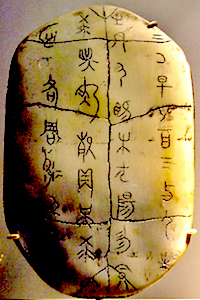
Shang Dynasty 殷代 (1600 – 1046 BCE)
Shang or Yin Eynasty, 商朝; Shāng cháo (1600–1046 BCE)
Unlike the Xia Dynasty, archaeological evidence supports Shang Dynasty history. Dedicated to divination practices that inscribed questions on oracle bones, archaeologists found over 100,000 of these remnants. They represent the earliest known Chinese writing and provide a glimpse into the politics, religion, medicine, and economics of the era. Life expectancy during this time was only 30 years old and historians believe that ancestor worship was promoted to convince the population of the legitimacy of the succession. Bronze casting became a large-scale industry, many new musical instruments were invented, and astronomy advanced to a level of being able to record movements of Mars and diverse comets. Stories about the fall of the Shang Dynasty in a battle with the Zhou resemble Homer’s Iliad with rival gods supporting each side. And resembling ancient Egypt, Kings and royalty were placed in elaborate tombs with many valuable objects as well as humans and horses thought to have been buried alive.
Sages (7)
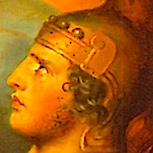
Aeneas
12th C. BCE
Personification of the hero myth
Hero of fallen Troy, first Roman hero, ancestor of legendary founders of Rome, Romulus and Remus, described as a progenitor of Julius and Augustus Caesar, claimed as an ancestor of the British Kings including King Arthur, symbol of piety, loyalty and family values; Aeneas has a long story in myth, legend, and possibly history. Immortalized by Homer, Virgil, literature from ancient to modern times, famous operas, film and video games; he is used as an example of individuation and the hero myth in Jungian psychology.

Cassandra
12th C. BCE
Oracle of Crazy Wisdom
Symbol of the wisdom that’s hard to hear or difficult to practice when we do hear it, Cassandra also represents the disastrous consequences of not listening to that wisdom. Like her, many of the lineage holders on this list during their lifetimes were thought crazy, subversive, completely wrong and were only believed and respected much later. She personifies the intuitive, artistic, open approach to life in balance with Apollo’s linear emphasis on clear definitions, order, and superficial understanding of just the words, not the sense. We see both of these principles magnified today in politics and environmental debate, in all our forms of individual and social denial.
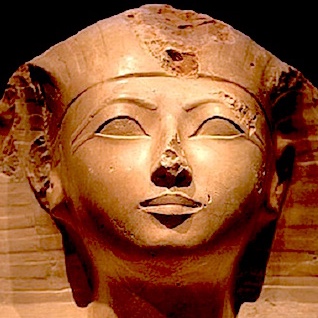
Hatshepsut (Hatasu)
1507 – 1458 BCE
"The Queen Elizabeth of Egyptian History"
Called by historians "the first great woman in history” and “one of the most powerful women in the history of the world,” Hatshepsut was also one of the most successful and compassionate pharaohs and set the stage for the zenith, the most golden age of Egyptian culture. Credited with the first transplanting of foreign trees, the first use of resin (making a kohl eyeliner), and one of the most prolific builders; she made the tallest surviving ancient obelisk on Earth, buildings not rivaled for a thousand years, and so many statues that almost every major museum in the world includes them.

Jiang Ziya 姜子牙
11th century BCE
"Master of Strategy"
Taoist adept and "master of strategy;" Jiang Ziya discovered how addicted to alcohol and women the Shang Dynasty emperor had become. He moved to the Zhou Kingdom where—after years waiting with an empty fishing line—he became military advisor to King Wen and his successor, King Wu. Together they established the Zhou Dynasty, the longest-lasting in all of Chinese history. His book, Six Secret Strategic Teachings became one of the Seven Military Classics of Ancient China, the only one of the Seven written with revolution in mind.
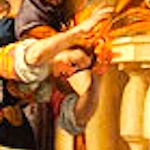
Lavinia
12th C. BCE
Prophetess and co-foundrer of the Roman Empire
Probably a legendary figure but “where there’s smoke, there’s fire” and Lavinia’s symbolic meaningfulness rates her place here. Co-foundress of the Roman Empire, prophetess, daughter of a king, wife of Aeneas, made famous by Virgil, Dante and Ursula Le Guin; Lavinia helped continue the Trojan traditions and ruled “behind the throne” for her too-young-to rule son with Aeneas, Ascanius whose progeny Romulus and Remus established Rome. She represents convergence and appreciating diversity rather than allegiance to narrow sectarianism. The symbol of her hair catching on fire foreshadows both the brilliance and violence of the Roman empire.
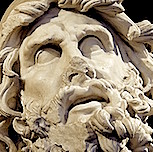
Odysseus Ὀδυσσεύς (Ulysses)
c. 1100 BCE
Trickster lineage hero and symbol
Cultural hero to the Greeks and respected for his cunning and strategy, Odysseus was reviled by the Romans as deceitful and without honor for not maintaining strict adherence to rules and ‘duty.’ Christians dismissed him and Dante relegated him to the lowest level of hell. He became a legendary Greek king and hero of Homer’s The Odyssey and a powerful symbol in the Trickster lineage. Stories of his successful guile, his brilliant solutions to problems, his courageous willingness to—for a good cause—go beyond conventions, norms, and chauvinistic beliefs for the greater good. Representing cultural themes long before Homer personified the Odysseus archetype, this imagery continues in the modern world in works by Tennyson, Kazantzakis, James Joyce, Virginia Woolf, Margaret Atwood, Susanne Vega, and the Coen brothers.
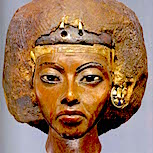
Queen Tiye
1398 – 1338 BCE
First proponent of monotheism
Royal Wife of pharaoh Amenhotep III, mother of Akhenaten, and grandmother of Tutankhamun; little known Queen Tiye changed history by proclaiming for the first time a single god and inspiring the monotheism of Moses. A foreign-born, legendary beauty of black descent with a powerful, wise personality; she was worshipped as a goddess and helped rule Egypt for 37 years bringing her country to it’s highest point of international power and prosperity while creating a revolution and peak in Egyptian art.
Chinese Eras
Xia Dynasty 夏 (2100 – 1600 BCE)
Shang Dynasty 殷代 (1600 – 1046 BCE)
Western Zhou 西周 (1046 – 771 BCE)
Eastern Zhou 東周 (770 – 256 BCE)
Spring and Autumn period 春秋时代 (770 – 476 BCE)
Warring States period 春秋时代 (476 – 221 BCE)
Qin Dynasty 秦朝 (221 – 206 BCE)
Three Kingdoms 三國時代 (220 – 280 CE)
Southern and Northern 南北朝 (420 – 589 CE)
Tang Dynasty 唐朝 (618 – 907 CE)
5 Dynasties 10 Kingdoms (907 – 960 CE)
5 Kingdom of Dali 大理国 (937 – 1253 CE)
Western Xia 西夏 (1038 – 1227 CE)
Southern Song (1127 – 1279 CE)
Comments (0)